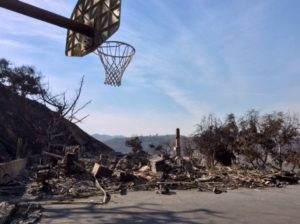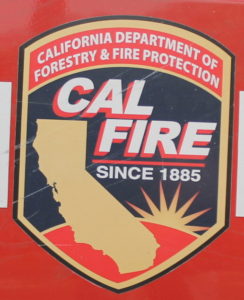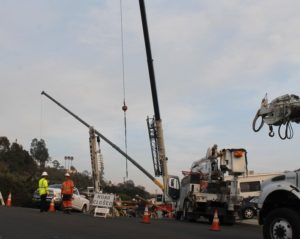The Ventura County Community Foundation awarded a total of $477,000 to two vital service providers providing immediate relief efforts to those impacted by the Thomas Fire–the American Red Cross and the Salvation Army. The grants awarded to these organizations will help fund their overall relief efforts including staffing of disaster shelters and the provision of food, supplies and other resources.
In addition, VCCF launched three new funds to support on-going recovery and support for those affected by Ventura County fires. Two of the funds are seeded by VCCF and are currently accepting community contributions. The third fund was created by the local district of Rotary International and has generated thousands of dollars in donations from Rotarians within the first few hours of launching.
VCCF’s Sudden and Urgent Needs (SUN) fund was established to provide a quick funding response in order to avoid the loss of critical safety net services. The fund has gone to work immediately, funding a power generator for Interface Children and Family Services, to operate the 211 community services hotline during power outages.
VCCF’s Community Disaster Relief Fund has been seeded with $200,000 by VCCF to provide funds for long-term relief and rebuilding efforts. Both funds are currently accepting community contributions through the VCCF website, www.vccf.org.
“Based on the experience of other communities that have experienced a disaster, donations come in fast initially with approximately 73 percent of those funds being used to provide immediate support during a disaster. Unfortunately, full recovery efforts may take from 5 to 10 years.”, said Vanessa Bechtel, president and CEO of the VCCF.
The donor-advised fund set up by the regional district of Rotary International. though VCCF provides Rotarians a means of contributing to support relief efforts. Rotary leadership will provide guidance on how the funds will be utilized and which relief efforts are funded.
In the immediate aftermath of a disaster, the immediate relief needs are clear—shelter, food, cash, and other basic needs. Recovery and rebuilding are more complex and depend on each community’s needs. In other communities, recovery efforts have included basic needs as well as longer term economic, health and social service support, he said.
Contributions can be made by mailing a check, contributing online, or making a gift of stock or wire transfer. For details, visit www.vccf.org.
The foundation was established in 1987 and endeavors to build philanthropy in the region and to give generously for the well-being of all in Ventura County. VCCF invests in the future through scholarships, grant making and collaborative partnerships. For more information or to donate, visit www.vccf.org.





